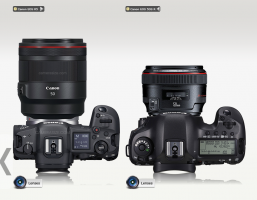Perhaps if 50mm was one of your favorite focal lengths, if shallow depth of field something you cherished and incorporated often, and if you shot with this lens for a few weeks, you'd understand "the hype." I don't mind the weight, and in real-world use, the vignette is no problem for me. The R6/R5 shadows clean up so nicely that, even when a subject is not centered, everything is fine.
The cost of the lens is tough to swallow, but with inflation, it is negligibly higher than its EF counterpart introduced in 2006. Furthermore it uses more material and has a lot of tech crammed in that wasn't part of the older L-series lens.

www.dollartimes.com
As for others comparing to zoom lenses, that's a different conversation.
The Youtuber is just trying to convey some of his excitement about the image quality of a great lens, and also some thoughts on the versatility of the focal length and aperture range. I don't think he was trying to scientifically, once and for all prove that 50mm is the ultimate, best ever focal length. In the online world, we have to put up with clickbait titles. For now. Maybe they'll fade from fashion some day.

